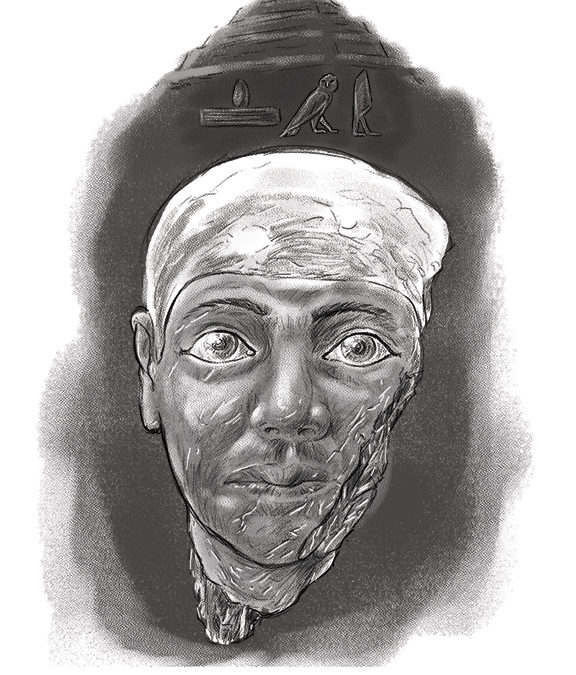If you ever saw the original 1932 film The Mummy starring Boris Karloff you may notice that the titular horror icon had a name, as did his counterpart in the 1999 remake starring Brendan Fraser and Arnold Vosloo, that name is Imhotep. But the real person behind the name is so much more interesting than a jilted lover cursed to stalk the night and enact vengeance upon those who disturbed his tomb.
Perhaps one of his best claims to fame is that he is the earliest master architect to sign his name to his work, before him we never knew who any of the individuals were behind the great buildings of the ancient world. Perhaps this was because the concept of taking credit for one’s work was not yet a thing before Imhotep came along or maybe those names who came before him were simply lost to history or lost in translation. Imhotep is credited as the architect of the first pyramid in Egypt, the Step Pyramid at Saggara, which was constructed between 2667 and 2648 BC during the 3rd Dynasty as the tomb of Pharaoh Netjerykhet Djoser (pronounced: Zozer). The Step pyramid is also the first example of stone columns being used to support a building.
There is evidence that Imhotep may have had a hand in the construction of Sekhemkhet’s unfinished pyramid, also at Saggara, and he may have also worked on the Edfu Temple near Isna but scholars have not confirmed either of these.
Beyond architecture and engineering, Imhotep’s expertise spanned the spiritual, the political, and the medical as well. A polymath, his list of titles is almost as long and impressive as his achievements, especially considering he was born a commoner. During his lifetime he was called Chancellor of the King of Egypt, Doctor, First in line after the King of Upper Egypt, Administrator of the Great Palace, Hereditary nobleman, High Priest of Heliopolis, Builder, Chief Carpenter, Chief Sculptor, and Maker of Vases in Chief.
In 1862 a man named Edwin Smith purchased what would become known as the Edwin Smith Papyrus, the oldest known surgical treatise on trauma. The document details 90 plus anatomical terms and describes 48 medical cases, including 27 head injuries, and so on. It is believed that Imhotep is the original author of this text. There is also some indication that he founded a school of medicine I his home city of Memphis as an extension his cult center, this was 2200 years before the birth of Hippocrates, the father of Western Medicine.
2000 years after his death Imhotep’s status was changed from that of a commoner who rose through the ranks by use of his own intelligence and charisma to that of a deity of medicine and healing. It seems that he was confused with Thoth, Egyptian god of architecture, mathematics, medicine, and patron of scribes. The identity of Imhotep, what remained of his cult and Thoth seem to have been merged to create something new. His origins were even changed to include mythology surrounding his birth, raising his mother from mortal to the daughter of Banebdjedet, the Egyptian ram god, with Imhotep’s father being elevated to that of Ptah, God of creation, the arts, fertility, and craftsmen. This would be like if we took Leonardo DaVinci and merged his origins with that of the Pope and Jesus and decided that he must be the Holy Representation of Art and Engineering a few centuries from now. I guess that is what happens when your ancient civilization is almost 21 times older than the United States of America nearly 1800 years before the US was even founded. Who knows what America would be like if it lasts even half of the 5000 years that Egypt did or how our current history and figures will be remembered, if at all.

